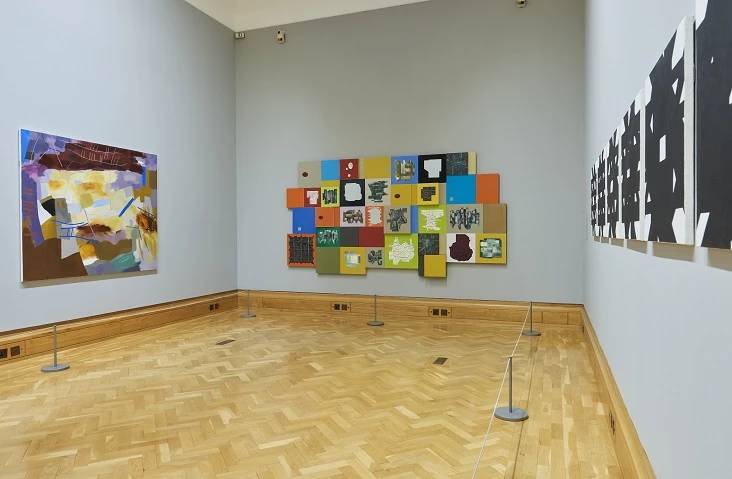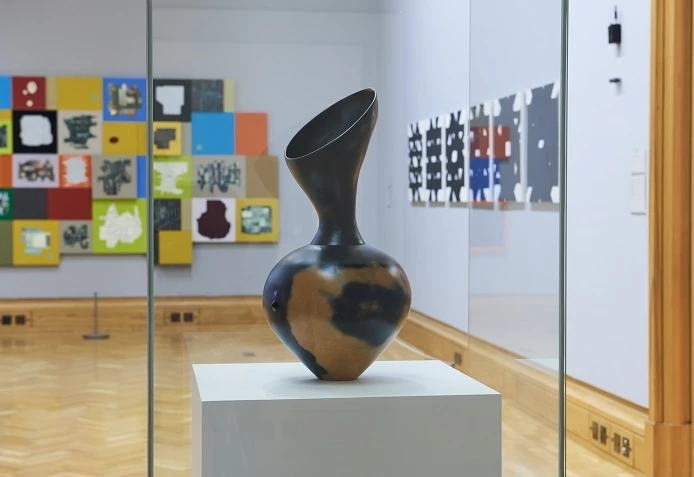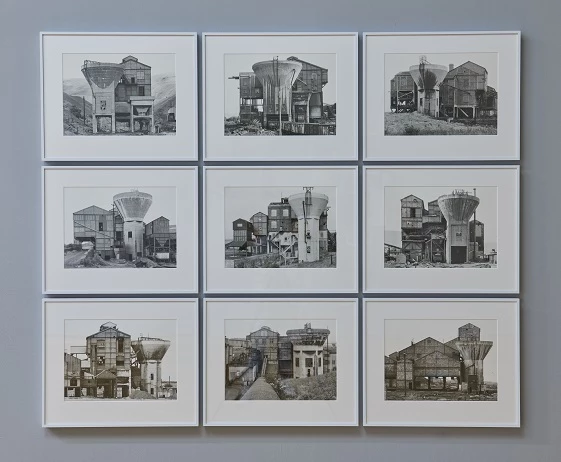Introducing the new art acquisitions on display for the very first time
, 27 September 2021
A large part of our work in the Art Department at Amgueddfa Cymru is researching and working on new acquisitions for the collection. Even with the Museum closed for much of the last 18 months, activity has continued behind the scenes on developing our collections.
With the Museum reopening, we thought we would put together a small group of these new acquisitions in Gallery 11 at National Museum Cardiff that we hope you will enjoy. There is an eclectic mix of work; from Welsh artists, artists working in Wales and some leading national and international figures of modern and contemporary art.
New acquisitions
Also, what is currently on show is actually a small fraction of what has been collected over the last year or two. The development of the Art Collection has been an ongoing, century long project – one that never stops and is key to the Amgueddfa Cymru collections more generally remaining relevant and dynamic. That said, there is a great deal more to do in terms of what our collection says about Wales in the 21st century as the National Collection of today is also an important artistic and historic resource for future generations.
Below is some information on each of the new works on display. But what better way to appreciate them than by coming to the Museum and seeing them in person!
The organic and the systemic
Magdalene Odundo, Asymmetric I, 2016, terracotta
Purchased with support from Art Fund and the Derek Williams Trust
© Magdalene Odundo
In contrast to Odundo’s organic making style, David Saunders, in works like Black Transformation (1973-74, oil on canvas), relies on logical and mathematical processes to produce a systematic method of creating work.
Shaped by life experiences
Gareth Griffith, Bertorelli, 2019, mixed media
© Gareth Griffith
A strong theme of this display is the way that artists draw on their own experiences, either their own life histories or in response to the landscapes and histories of Wales. Gareth Griffith’s Bertorelli recalls his childhood memory of a double portrait in the Bertorelli ice cream parlour in Caernarfon. He later purchased the portrait and reworked it into this piece.
Exploring the landscape
Mary Lloyd Jones
Pwerdy Ceunant (2019)
Urban and industrial Wales
Bernd and Hilla Becher’s Preparation Plants, 1966-1974 (gelatin silver prints)
André Stitt’s Municipal Wall Relief for a Housing Complex in a Parallel Universe (2015-16; oil, acrylic and enamel on wood panels) also looks back to what now seems a bygone age, capturing the modernist optimism of post-war architecture and town-planning.
Plan your visit
These artworks are now on display for the first time in the art galleries in National Museum Cardiff. Access to the museum is free, but you will need to pre-book a free ticket in advance. Please see our Plan Your Visit page for more information.
With thanks
Amgueddfa Cymru is grateful to Mary Lloyd Jones, David Saunders, the estate of Roger Cecil, Art Fund, the Derek Williams Trust and the Henry Moore Foundation for their generosity in making these acquisitions possible.




